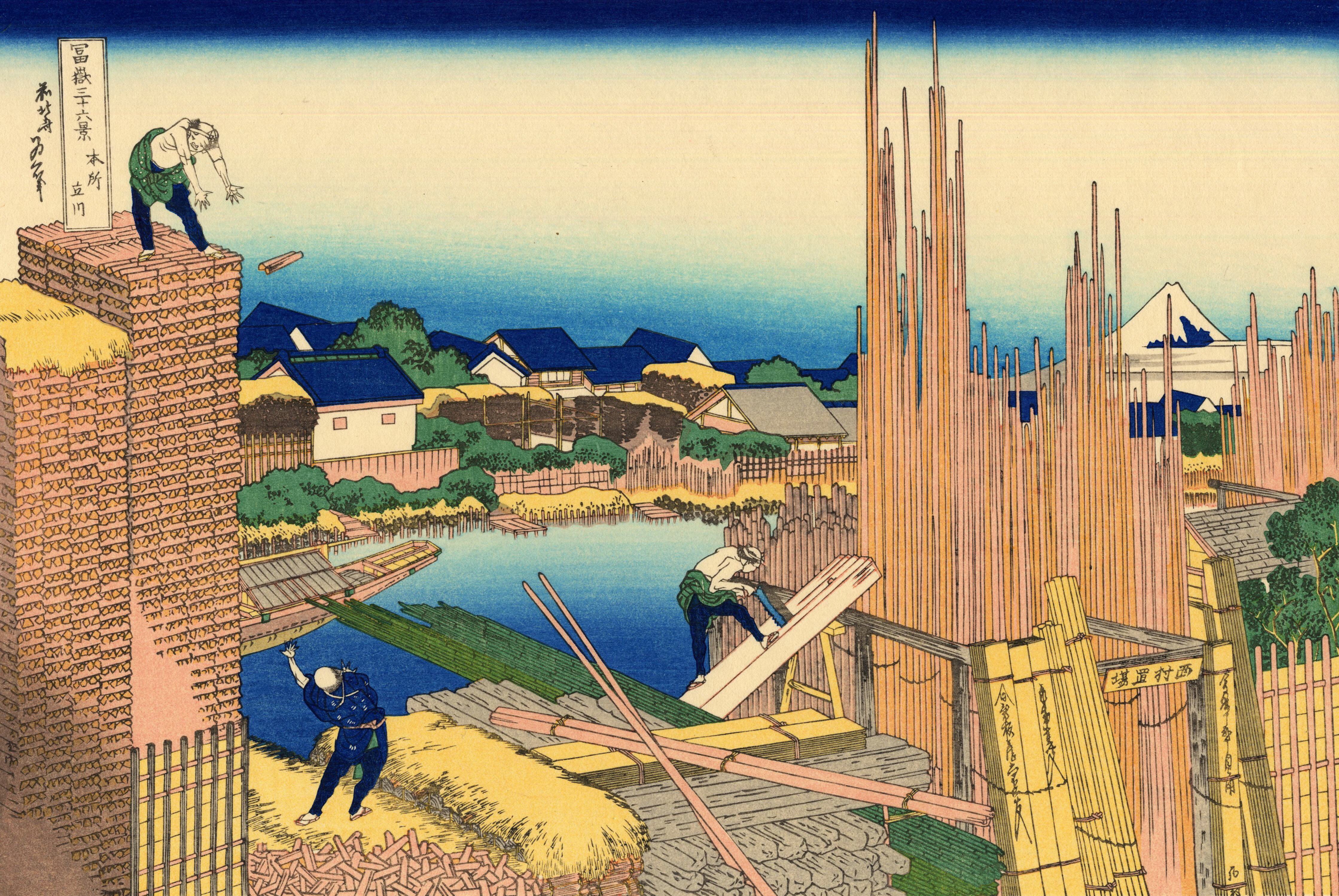|
Honjo, Tokyo
is the name of a neighborhood in Sumida, Tokyo, and a former ward (本所区 ''Honjo-ku'') in the now-defunct Tokyo City was a municipality in Japan and part of Tokyo-fu which existed from 1 May 1889 until its merger with its prefecture on 1 July 1943. The historical boundaries of Tokyo City are now occupied by the Special Wards of Tokyo. The new merged gove .... In 1947, when the 35 wards of Tokyo were reorganized into 23, it was merged with the suburban Mukojima ward to form the modern Sumida ward. Neighborhoods The former Honjo ward contained the following modern districts: * Azumabashi * Chitose * Higashikomagata * Honjo * Ishiwara * Kamezawa * Kikukawa * Kinshi * Kotobashi * Midori * Mukojima * Narihira * Ryōgoku ( sumo district) * Taihei * Tatekawa * Yokoami * Yokokawa Places named after Honjo * Honjo High School * Honjo-Azumabashi Station * Honjo Matsuzaka-cho Park {{coord, 35, 42, 13, N, 139, 48, 04, E, type:city_region:JP, display=title Neighborhoods of ... [...More Info...] [...Related Items...] OR: [Wikipedia] [Google] [Baidu] |
Sumida, Tokyo
is a special ward located in Tokyo Metropolis, Japan. The English translation of its Japanese self-designation is Sumida City. As of May 1, 2015, the ward has an estimated population of 257,300, and a population density of 18,690 persons per km2. The total area is 13.77 km2. Its City Office is located in Azumabashi, but its commercial centre is the area around Kinshicho Station in the south. Geography Sumida is in the north-eastern part of the mainland portion of Tokyo. The Sumida and Arakawa are the major rivers, and form parts of its boundaries. Its neighbors are all special wards: Adachi to the north; Arakawa to the northwest; Katsushika to the east; Edogawa to the southeast; Taitō to the west; Chūō to the southwest; and Kōtō to the south. Landmarks *Tokyo Skytree: A digital terrestrial television broadcasting tower used by NHK and other broadcasters. It is the tallest tower in the world and the tallest man-made structure in Japan. The commercial facility ... [...More Info...] [...Related Items...] OR: [Wikipedia] [Google] [Baidu] |
Tokyo City
was a municipality in Japan and part of Tokyo-fu which existed from 1 May 1889 until its merger with its prefecture on 1 July 1943. The historical boundaries of Tokyo City are now occupied by the Special Wards of Tokyo. The new merged government became what is now Tokyo, also known as the ''Tokyo Metropolis'', or, ambiguously, ''Tokyo Prefecture''. History In 1868, the medieval city of Edo, seat of the Tokugawa government, was renamed Tokyo, and the offices of Tokyo Prefecture (''-fu'') were opened. The extent of Tokyo Prefecture was initially limited to the former Edo city, but rapidly augmented to be comparable with the present Tokyo Metropolis. In 1878, the Meiji government's reorganization of local governments subdivided prefectures into counties or districts (''gun'', further subdivided into towns and villages, later reorganized similar to Prussian districts) and districts or wards (''ku'') which were in ordinary prefectures cities as a whole, e.g. today's Hiroshim ... [...More Info...] [...Related Items...] OR: [Wikipedia] [Google] [Baidu] |
Honjo Tatekawa, The Timberyard At Honjo
Honjō or Honjo may refer to: Places * Honjō, Akita * Honjō, Nagano * Honjō, Ōita * Honjō, Saitama * Honjo, Tokyo * Honjo Stadium * Honjo, Yutaro People * , Japanese samurai * , Japanese general *, Japanese immunologist Fictional characters * Honjō Kamatari from ''Rurouni Kenshin'' * Mika Honjō from ''Ginban Kaleidoscope is a Japanese light novel series written by Rei Kaibara and illustrated by Hiro Suzuhira. A manga adaptation authored by Jun Hasegawa was serialized in Margaret from 2005 to 2006. An anime adaptation of the first arc of the novels aired on T ...'' * Ren Honjo from ''Nana'' {{disambiguation, geo, given name, surname ... [...More Info...] [...Related Items...] OR: [Wikipedia] [Google] [Baidu] |
Ryōgoku
is a district in Sumida, Tokyo. It is surrounded by various districts in Sumida, Chūō, and Taitō wards: Yokoami, Midori, Chitose, Higashi Nihonbashi, and Yanagibashi. In 1659, the Ryōgoku Bridge was built, spanning the Sumida River just upstream of its confluence with the Kanda River. Its name, meaning "two provinces," came from its joining Edo (the forerunner of Tokyo in Musashi Province) and Shimōsa Province. The district derived its name from that of the bridge. The Forty-seven rōnin avenged the death of their lord, Asano Naganori, by breaking into the mansion of his enemy, Kira Yoshinaka, in 1703. Part of the mansion has been preserved in a public park in Ryōgoku. Ryōgoku Station in the neighboring Yokoami district was opened in 1904, bringing rail transportation to the area. It is regarded as the heartland of professional sumo. Most training stables or '' heya'' are based there. The first Ryōgoku Kokugikan stadium for sumo was completed in 1909. The ... [...More Info...] [...Related Items...] OR: [Wikipedia] [Google] [Baidu] |
Sumo
is a form of competitive full-contact wrestling where a '' rikishi'' (wrestler) attempts to force his opponent out of a circular ring ('' dohyō'') or into touching the ground with any body part other than the soles of his feet (usually by throwing, shoving or pushing him down). Sumo originated in Japan, the only country where it is practiced professionally and where it is considered the national sport. It is considered a '' gendai budō'', which refers to modern Japanese martial arts, but the sport has a history spanning many centuries. Many ancient traditions have been preserved in sumo, and even today the sport includes many ritual elements, such as the use of salt purification, from Shinto. Life as a wrestler is highly regimented, with rules regulated by the Japan Sumo Association. Most sumo wrestlers are required to live in communal sumo training stables, known in Japanese as '' heya'', where all aspects of their daily lives—from meals to their manner of dress—ar ... [...More Info...] [...Related Items...] OR: [Wikipedia] [Google] [Baidu] |



